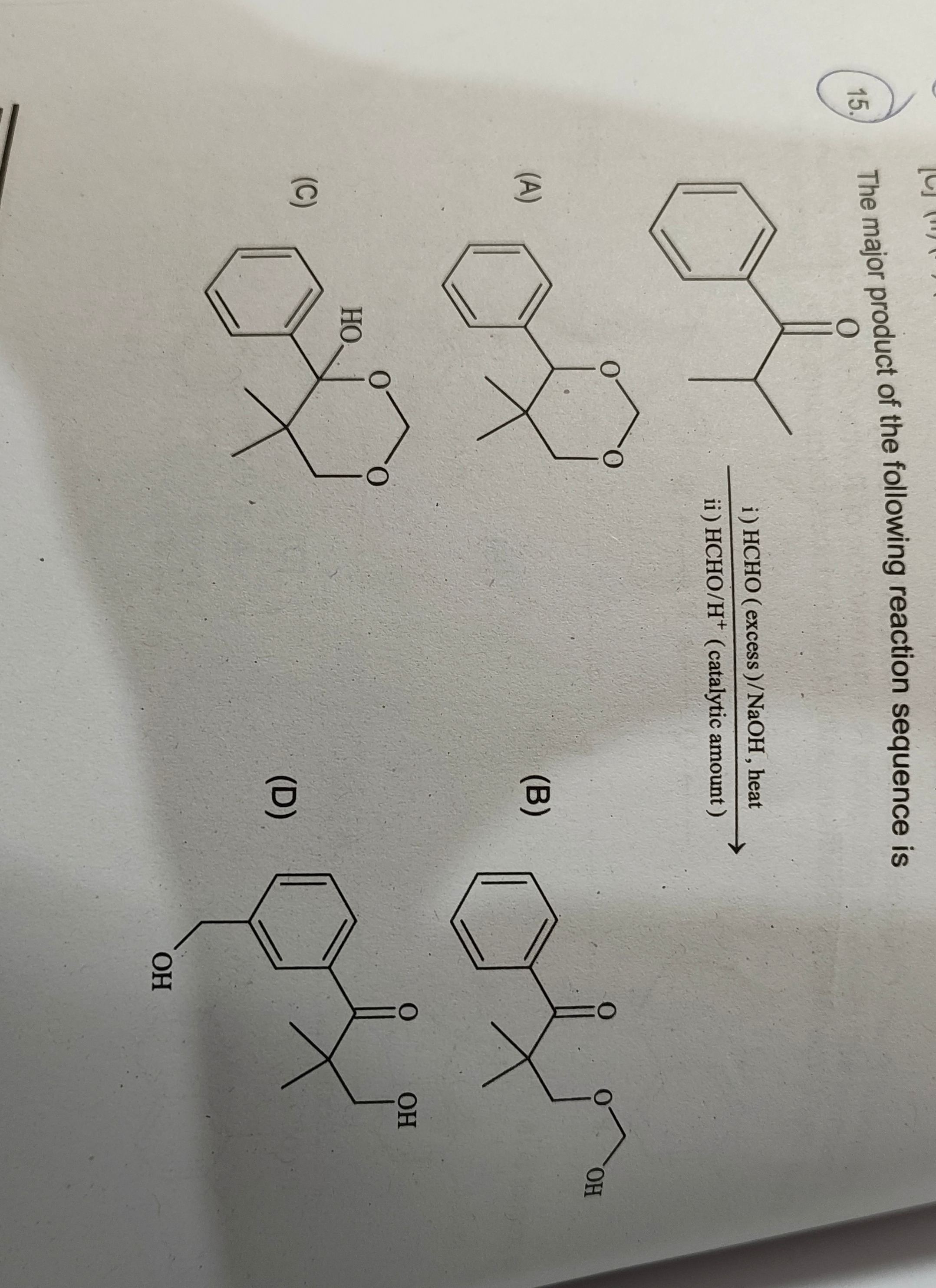Question
Question: The major product of the following reaction sequence is ...
The major product of the following reaction sequence is

shows a benzene ring connected to a carbon atom bonded to two methyl groups. The carbon atom is also connected to a six-membered ring containing two oxygen atoms at positions 1 and 3.
shows a benzene ring connected to a carbonyl group (C=O), which is connected to a carbon atom bonded to two methyl groups. The carbon atom is also connected to a -CH2-O-CH2-OH group.
shows a benzene ring connected to a carbon atom bonded to two methyl groups. The carbon atom is also connected to a six-membered ring containing two oxygen atoms at positions 1 and 3, and a hydroxyl group (-OH).
shows a benzene ring connected to a -CH2-OH group and a carbonyl group (C=O), which is connected to a carbon atom bonded to two methyl groups and a hydroxyl group (-OH).
Option (D)
Solution
-
Under the basic conditions (excess HCHO/NaOH, heat) the benzylic‐ketone (with a masked 1,3‐dioxane function) undergoes addition of formaldehyde at the α–position. In effect, an intermediate is formed which, under subsequent mild acidic treatment (HCHO/H⁺ catalytic), rearranges in a manner analogous to the benzilic acid rearrangement.
-
In this rearrangement the original connectivity is altered so that the benzene portion is now linked via a CH₂OH group (indicative of migration of the benzoyl unit) and the carbonyl is now bonded to a tertiary carbon which also bears an OH group.
-
Among the four choices, only option (D) shows this connectivity: a benzene ring attached to a –CH₂OH group and, separately, a carbonyl group (C=O) bonded to a C(CH₃)₂–OH fragment.
Explanation (Core and Minimal):
- Step 1: Under basic conditions, formaldehyde adds to the α–position of the benzoyl derivative.
- Step 2: Acid-catalyzed rearrangement (benzilic acid type) occurs, resulting in migration of the benzoyl group.
- Step 3: The resulting product has a –CH₂OH attached to the benzene and a C=O next to a C(CH₃)₂–OH group, as shown in option (D).
